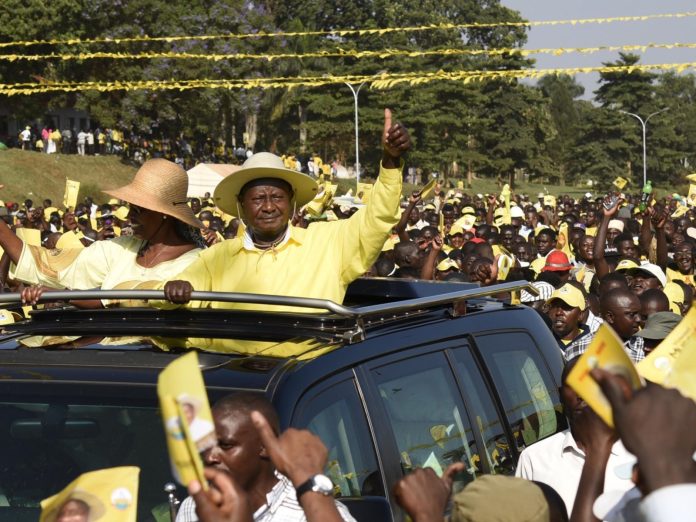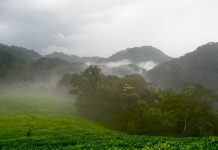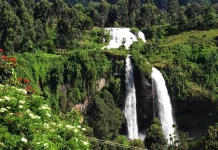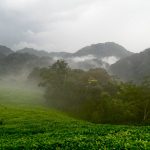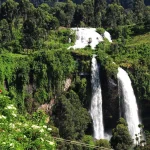The political system of Uganda occurs in an authoritarian context. This dates back to 1894 when Uganda was a British protectorate. Uganda was put together in organized kingdoms and chieftaincies around the great lakes region of central Africa.
History of Political system in Uganda
Later in 1962 when Uganda attained her independence and Dr Apollo Milton Obote who was the leader of Uganda Peoples Congress (UPC) became the first prime minister and the head of government. However a year before indepence the party had lost in several elections to Democratic party (DP). Later UPC had to collaborate with the pro-monarchy party Kabaka Yekka (KY) which aimed at protecting the institution and the power of the Buganda kingdom so that it doesn’t lose again.
In November 1963 Kabaka Mutesa II the then king of Buganda was elected as the ceremonial president of Uganda sealing the political alliance between UPC and KY. However, this alliance didn’t last long due to differences in agendas between the political party leaders. These include obote’s supporting a referendum on the belonging of the counties of Buwekula, Buyaga and Bugangayizi that belonged to Buganda Kingdom by then. These counties were claimed by the neighboring kingdom of Bunyoro. The referendum stated that the Buganda Kingdom withdrew the two counties to revert them to Bunyoro Kingdom. The King of Buganda was forced to sign the two acts pertaining to the lost counties. It was upon accusations of dereliction of duty by the President other reasons were not mentioned. Obote decided to suspend the 1962 constitution and on 22nd February 1966 he decided to take over all the power of the state which led to the 1966 crisis.
In April 1966 Obote introduced a new constitution known as pigeonhole constitution where he was supposed to be voted on that very day. The troops stormed the parliament and the constitution was passed without debates. The members of the house were told that they would find their copies in the pigeonholes. Among other things, the federal constitution of the kingdoms was abolished and the prime minister office merged with that of the president. All the executive powers were granted to Obote and Uganda was declared a Republic. This constitution was not accepted by Kabaka and his subjects, insisting on the 1962 constitution. On 24th May 1966 the army stormed the kabaka’s palace in Mengo under the command of Idi Amin Dada but on orders of Obote. The Kabaka managed to escape and he was exiled to Britain where he died. In 1967 president Obote abolished all monarchs and all political parties except UPC making Uganda one party state. The parliament became the constituent assembly.
On 25th January 1971, Idi Amin led the disgruntled army which overthrew Obote. This was the beginning of the era of terror, tribulation of Ugandans and expelling of Asians especially the Indians and this lasted for 8 years. This led to decline in the country’s economy.
According to what had happened in April 1979 Ugandans combined forces under the Uganda National Liberation Front (UNLF) with the help of Tanzania people’s Defence force overthrew Amin’s regime. The party brought together all the disparate Ugandans who had a common goal of fighting the Amin regime. The UNLF was under the leadership of Yusuf Lule who stayed in power for 68 days. After president Lule, Godfrey Binaisa replaced him and then Paulo Muwanga who chaired the Military commission in 1980 that won the general elections. However UPC was declared the winner of these elections and they were considered rigged. This led to the rise of Obote for a second time as the president of the Republic of Uganda. During this period Ugandans went through trying moments as there was an increase in the insecurities as well as ongoing liberation struggle and the economy was shuttered.

The liberation struggle was led by Yoweri Musevi who was the chairman of the Military commission and the president of the Uganda patriotic movement. The struggle was launched on 6th february in 1981 with 26 compatriots under the umbrella of National Resistance Army. The NRA had divided the country into two different administrative zones and the UNLA was able to force out Obote from the president’s seat on 26th July 1985. Obote II was replaced by the military junta of Generals Tito Okello Lutwa and Bazilio. On 26th February 1986 Tito Okello Lutwa died however the country was now in the control of the NRA. Yoweri Kaguta Museveni was sworn in as the president of the Republic of Uganda. He has the task of rebuilding the country and its human fabric from scratch. To enable this tasks He has ruled the country as an autocrat as the political parties were banned from 1986 to 2006. This was done so that a lot can be achieved over the next ten years as he had stated. The NRA continued to face a lot of challenges including the reactionary UNLA forces in northern Uganda.
Current political system
In 1995 a new constitution was formed creating a non party all inclusive movement system of the government. In the constitution monarchies were restored including the Buganda kingdom except for the Ankole kingdom. The restored monarchies had limits to cultural matters. It also removed presidential term limits and the multi-political party system was legalized. However all the political parties remained suspended and elections to most political offices were given a right to vote. The marginalized groups like women, workers, youths and the disabled were given special treatment in all the administrative units in the government. With the first female vice president in Sub Saharan Africa Specioza Wandira Kazibwe who was appointed in 1994. The military also got representatives in the parliament. This system was supposed to be reviewed every after 4 years.
Later in 1996 general elections were held and Yoweri Museveni was returned as the president of Uganda. He became the first president to be elected by people. In 2001 he was again returned by the popular mandate to the office of president.
The Uganda multi party referendum was held in July 2005 and Ugandans resolved to restore to the multi party politics this was the end of the movement system. In February 2006 multi party elections were held for both parliament and presidential offices. Again president Yoweri Kaguta Museveni under the National Resistance Movement (NRM) defeated his opponent Dr Kizza Besigye from the Forum for Democratic Change (FDC). The NRM took the highest of the seats in parliament. However Besigye didn’t accept his defeat. He claimed fraud and rejected the results. The supreme court of Uganda ruled that the elections were ruined by violence, voter disenfranchisement, intimidation and other irregularities. The courts decided to go with a majority vote. From that time Museveni has used legal means including violence and patronage so as to maintain power.
Political parties and elections
Presidential elections

Under the constitution of Uganda, the head of the state is the president who is elected by the popular vote to a five year term. The recent presidential elections took place on 14th February 2021 with 11 aspirants including a woman. These elections were marred with violence and condemnation and sanctions against individuals and organizations responsible for human rights. Uganda’s current president is Yoweri Kaguta Museveni who is also the leader of the armed forces. Museveni was elected with 58.38% votes. In addition to the presidential office, there is a cabinet which is appointed by the president. Among these offices include; the prime minister who is the head of government business and assists the president in the supervision of the cabinet. The current prime minister is Robinah Nabbanja. Others include the vice president, and a number of ministers who run the state. All the executive power is exercised by the government. The legislative power is given to both the government and National Assembly. This system is based on democracy as citizens above 18 years have equal rights.
Judiciary and politics
The Judiciary operates independently and consists of supreme court, courts of appeal (also works as constitutional court), high courts and magistrate courts. The judges in high court and Court of Appeal are appointed by the president those court of Appeal are approved by the legislature
